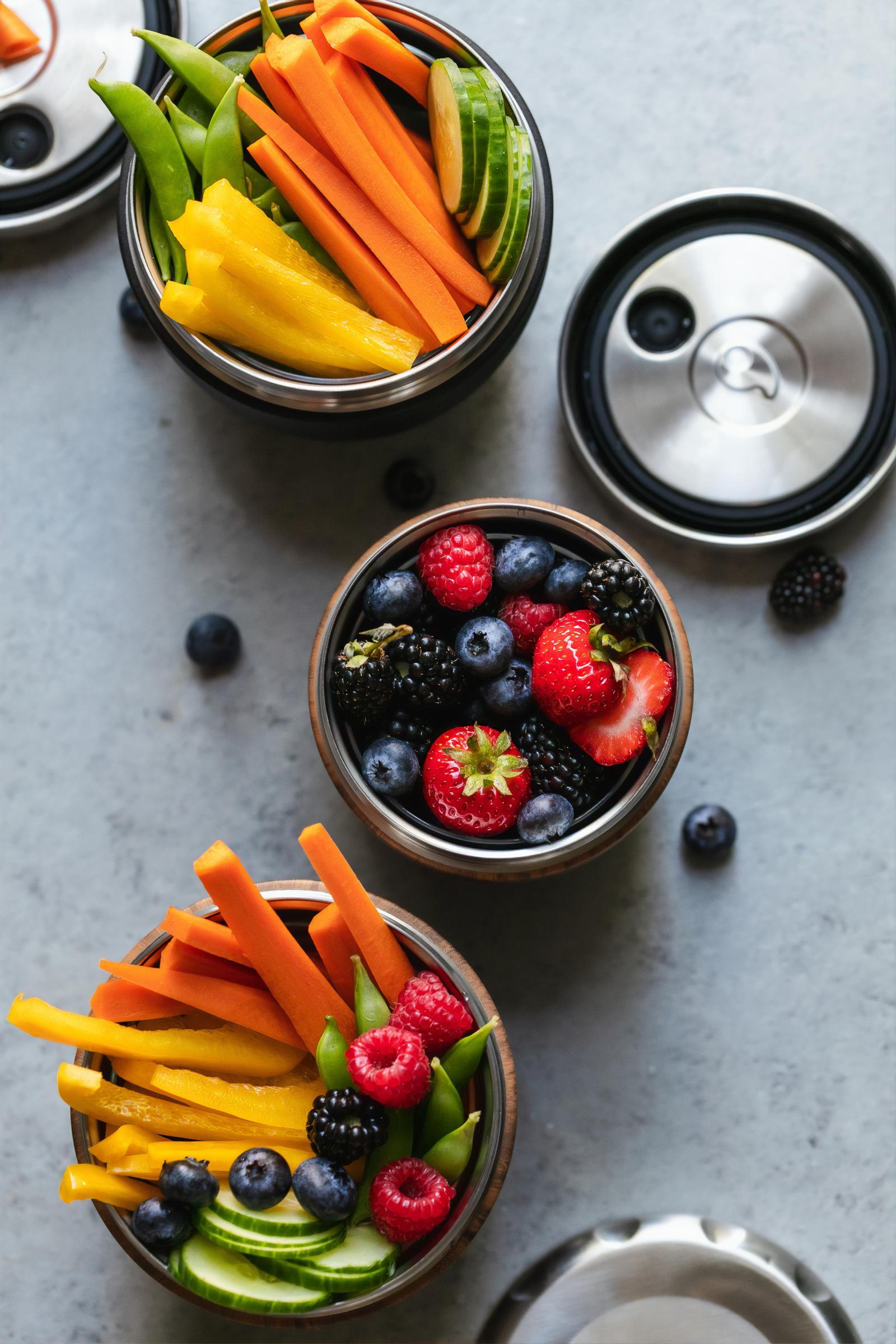******
We are all very excited for our new Lunch Program to launch in Term 2, but until then we all have lunch boxes to pack each morning to fuel our kids minds and bodies for the day.
We often hear that a lunch box should be 'healthy'. But what does that actually mean and and what kind of foods could you include so it's not 'apparently' boring or so that you child would eat it?
These are all great questions.
Firstly a 'healthy' lunchbox is pivotal for a student's ability to learn and focus while at school. Healthy nutritious food also supports children's growing bodies, positive behaviour and healthy habits so it really is a win win!
Here is a great short video from the Move Well Eat Well website that you might find helpful.
Top tips for packing a lunchbox
1. Include a variety of everyday foods from the 5 food groups in a lunchbox
Breads and cereals
- Use different types of bread for sandwiches or wraps – wholemeal, multigrain, high fibre white, rye, focaccia or pita bread
- Try pasta, rice, couscous, noodles or quinoa in a salad
Vegetables
- Pack easy to eat vegetable sticks – carrot, capsicum, celery, cherry tomatoes or snow peas
- Include plenty of vegetable in sandwiches or wraps – lettuce, sprouts, grated carrot, cucumber or beetroot
Fruit
- Try any fresh fruit in season – peel or cut up for easy eating
- Tinned fruit (in natural juice) or stewed fruit can add some variety
Dairy foods and alternatives
- Include reduced fat yoghurt or custard
- Try wholemeal or multigrain crackers with cheese
Meat and meat alternatives
- Try lean ham, tinned tuna, peanut butter* in sandwiches or wraps
- Use left-over roast meat like chicken, beef, pork or lamb in sandwiches or salads.
2. Limit 'sometimes' foods
- 'Sometimes' foods such as chocolate, lollies, muesli bars, chips or sweet biscuits are best kept for special occasions at home.
- These foods are high in fat, sugar and/or salt and do not offer children any goodness.
- Try some of the following 'everyday' foods in your child’s lunchbox instead:
- Pikelets or scones
- Fruit bun or fruit bread
- Plain air-popped popcorn
- Trail mix made with plain popcorn, dried fruit and breakfast cereal
- Home-made vegetable or fruit muffins. Go to this link for recipe ideas.
3. Don’t forget the water bottle
- Water is the best drink to beat thirst.
4. Include enough food for the day
- Use your child’s appetite as a guide.
- Pack something for recess and lunchtime and include a variety of foods from the
5 food groups.
5. Keep food safe!
- Send your child’s food in an insulated lunchbox or bag.
- Add an ice brick or frozen water bottle to keep lunches cold.
- Store lunches out of the sun and well away from heaters.
- After school throw away uneaten food unless sealed in a packet. Clean lunchboxes and drink bottles with hot soapy water and allow to dry.
Try some of the following ideas:
- Lean roast beef, grainy mustard and lettuce on rye bread
- Mini-pizza - English muffin topped with vegetables, lean ham and cheese
- Pasta salad with roast chicken, 3-bean mix and vegetables
- Small tin of baked beans and a bread roll
- Grated carrot, sultanas and peanut butter* on high fibre white bread
- Vegemite™, cheese and chopped celery on a roll
- Tuna, corn and reduced-fat mayonnaise with sprouts wrapped in mountain bread
- Lean ham, cheese and coleslaw in a wholemeal bread roll
* Check your schools policy on nuts
JPII is a nut and egg free school.
